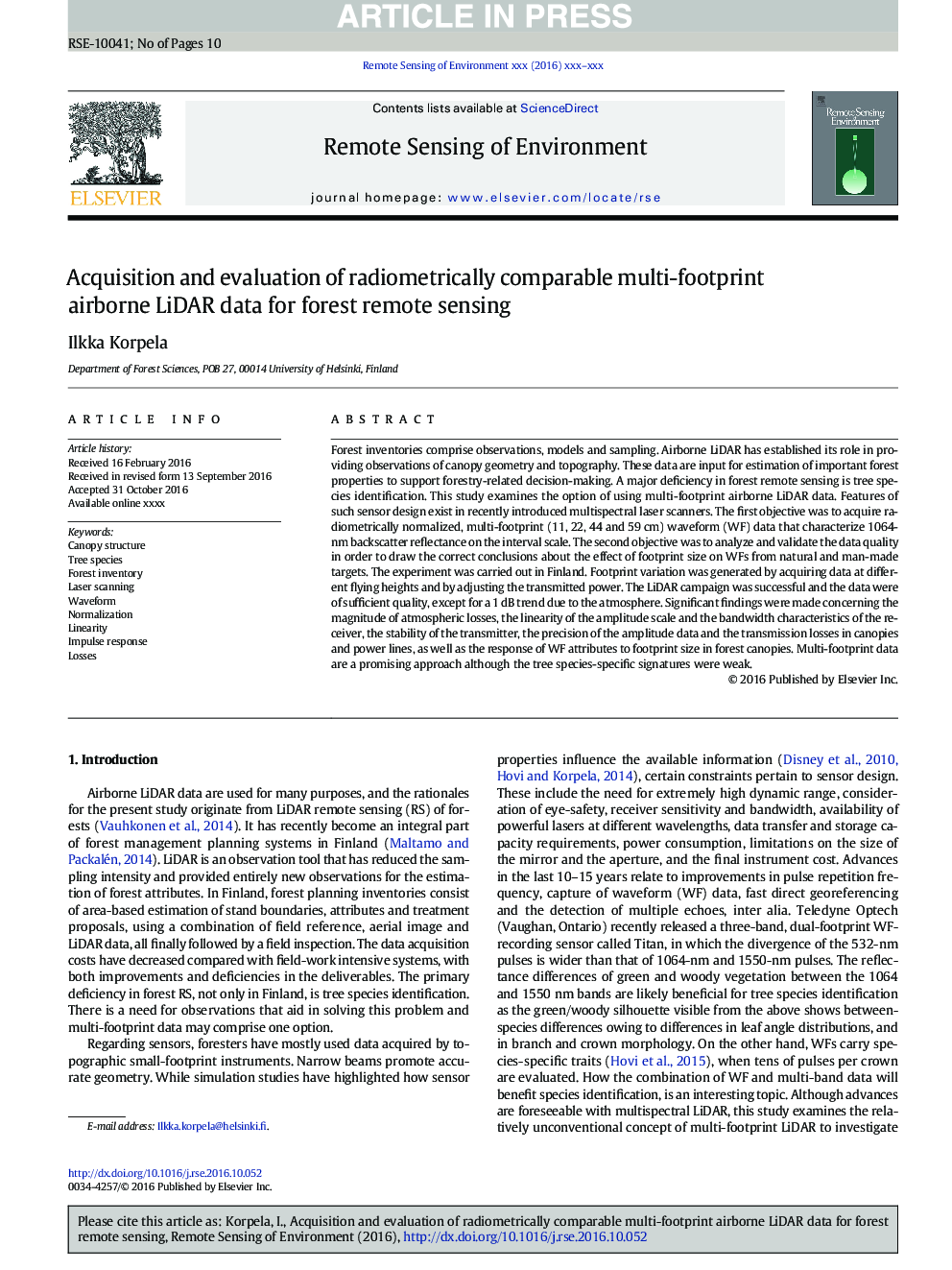| Article ID | Journal | Published Year | Pages | File Type |
|---|---|---|---|---|
| 5754983 | Remote Sensing of Environment | 2017 | 10 Pages |
Abstract
Forest inventories comprise observations, models and sampling. Airborne LiDAR has established its role in providing observations of canopy geometry and topography. These data are input for estimation of important forest properties to support forestry-related decision-making. A major deficiency in forest remote sensing is tree species identification. This study examines the option of using multi-footprint airborne LiDAR data. Features of such sensor design exist in recently introduced multispectral laser scanners. The first objective was to acquire radiometrically normalized, multi-footprint (11, 22, 44 and 59Â cm) waveform (WF) data that characterize 1064-nm backscatter reflectance on the interval scale. The second objective was to analyze and validate the data quality in order to draw the correct conclusions about the effect of footprint size on WFs from natural and man-made targets. The experiment was carried out in Finland. Footprint variation was generated by acquiring data at different flying heights and by adjusting the transmitted power. The LiDAR campaign was successful and the data were of sufficient quality, except for a 1Â dB trend due to the atmosphere. Significant findings were made concerning the magnitude of atmospheric losses, the linearity of the amplitude scale and the bandwidth characteristics of the receiver, the stability of the transmitter, the precision of the amplitude data and the transmission losses in canopies and power lines, as well as the response of WF attributes to footprint size in forest canopies. Multi-footprint data are a promising approach although the tree species-specific signatures were weak.
Keywords
Related Topics
Physical Sciences and Engineering
Earth and Planetary Sciences
Computers in Earth Sciences
Authors
Ilkka Korpela,
